Question
Who among the following are sits exactly between F and
B? Study the following information carefully and answer the questions below: There are nine persons i.e. A, B, C, D, E, F, G, H and I are sitting in a triangular table such that three of them are sitting at the corner of the table and two persons are sitting on each side of the table. Some of them are facing inside the table and some are facing outside the table. Not more than two persons facing the same direction are adjacent to each other. F sits second to the left of H who sits at the corner of the table. Only one person sits between F and C who faces inside the table. D sits at one of the corner of the table but she is not an immediate neighbour of C. I sits third to the left of C. A is an immediate neighbour of H and both are facing the opposite direction to each other. E does not share the side with I and sits second to the left of G who does not sit at the middle of the table. B sits third to the left of I and both are facing the same direction. E faces the same direction as D faces which is opposite to that of F.Solution
F sits second to the left of H who sits at the corner of the table. As per this statement, there are two possible cases and the arrangement will look like this: 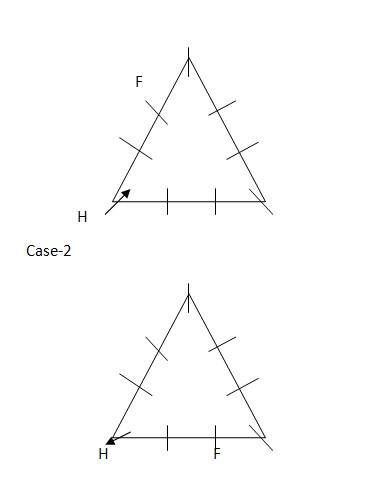 Only one person sits between F and C who faces inside the table.
Only one person sits between F and C who faces inside the table. 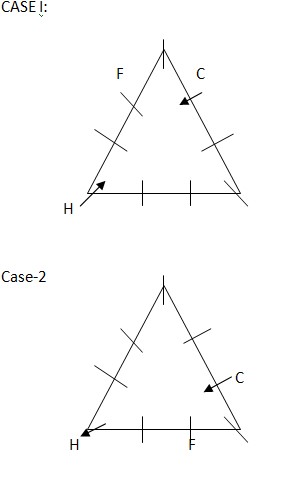 D sits at one of the corner of the table but she is not an immediate neighbour of C.
D sits at one of the corner of the table but she is not an immediate neighbour of C. 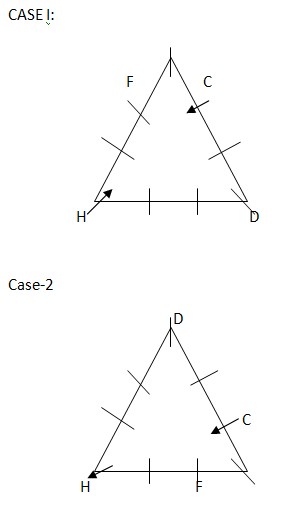 I sits third to the left of C.
I sits third to the left of C. 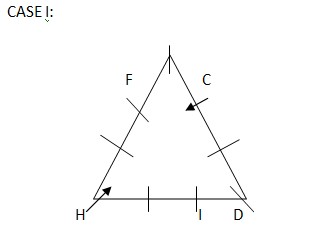 Case-2
Case-2 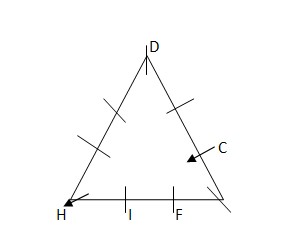 A is an immediate neighbour of H and both are facing the opposite direction to each other. As per this statement, CASE I will further get split into one more case and the arrangement will look like this:
A is an immediate neighbour of H and both are facing the opposite direction to each other. As per this statement, CASE I will further get split into one more case and the arrangement will look like this: 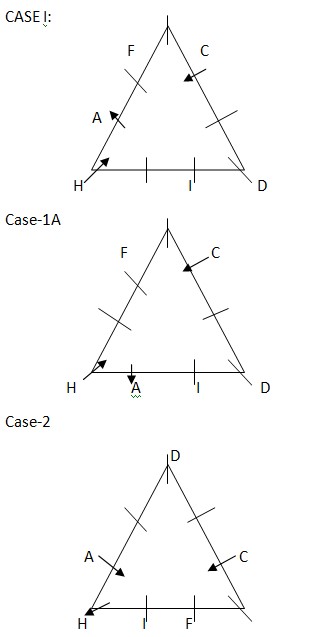 E does not share the side with I and sits second to the left of G who does not sit at the middle of the table. B sits third to the left of I and both are facing the same direction. As per this statement, CASE I and CASE I (A) will get eliminated and we will continue with CASE II and the arrangement will look like this:
E does not share the side with I and sits second to the left of G who does not sit at the middle of the table. B sits third to the left of I and both are facing the same direction. As per this statement, CASE I and CASE I (A) will get eliminated and we will continue with CASE II and the arrangement will look like this: 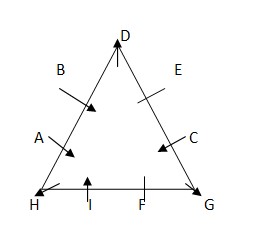 E faces the same direction as D faces which is opposite to that of F. As per this statement, the final arrangement will look like this: CASE II:
E faces the same direction as D faces which is opposite to that of F. As per this statement, the final arrangement will look like this: CASE II: 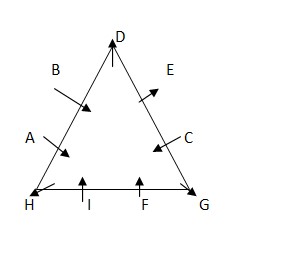
Recently Hindustan Aeronautics Limited (HAL) introduced Light Combat Helicopter for defense forces of India, it is named as?
What is the projected economic growth rate for India in 2024, largely driven by infrastructure spending?
Consider the following statements:
I. The PM eVIDYA has been initiated as part of Atma Nirbhar Bharat Abhiyaan by the Ministry of Education on 17...
Which bank has become the first bank to issue an 'ONDC Network Gift Card To revolutionize the shopping experience for Indian consumers & empower them ...
In which year will Mixed Martial Arts (MMA) debut at the Asian Games?
The Employees’ State Insurance Corporation (ESCI) has decided to cover the whole of India by the year _______ for its employee state insurance (ES...
Which of the following became the first Indian company to buy UAE’s T20 League franchise?
In which Indian state is the fifth edition of Exercise Harimau Shakti-2025 with Malaysia being conducted?
What was the theme of International Day of Education 2022?
Who has been appointed as the new Chief of RAW from July 1, 2025?
Relevant for Exams:


